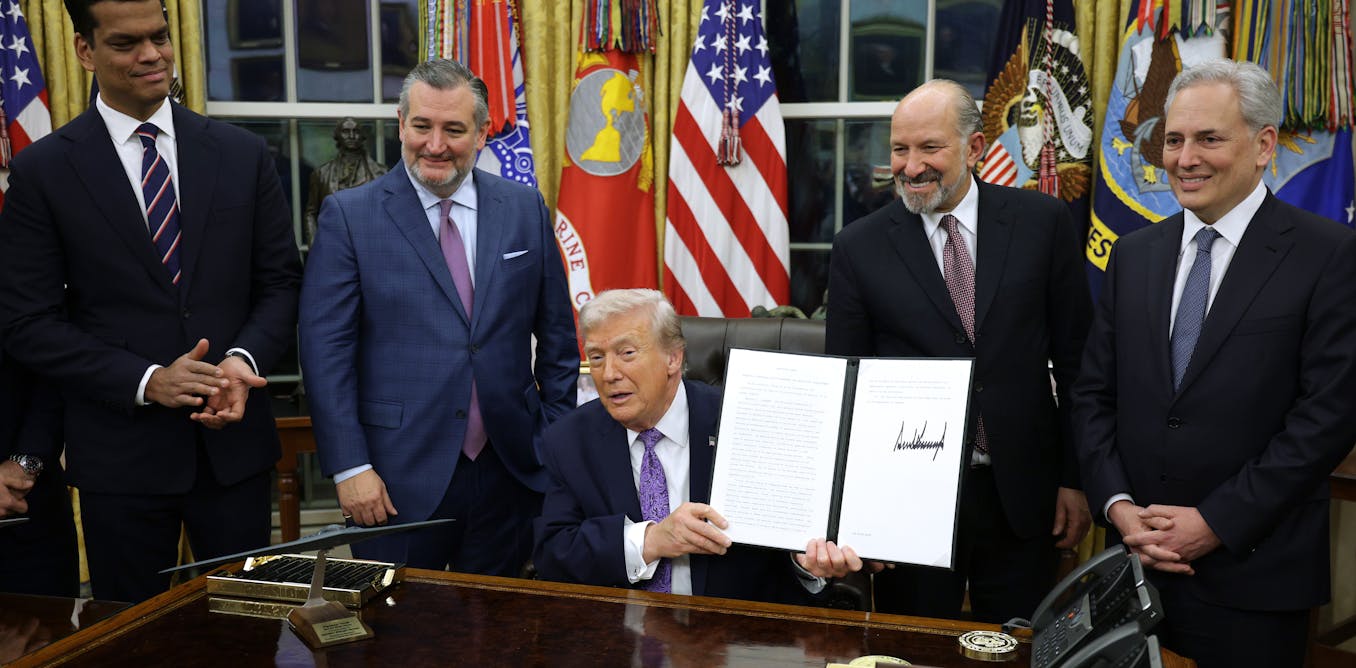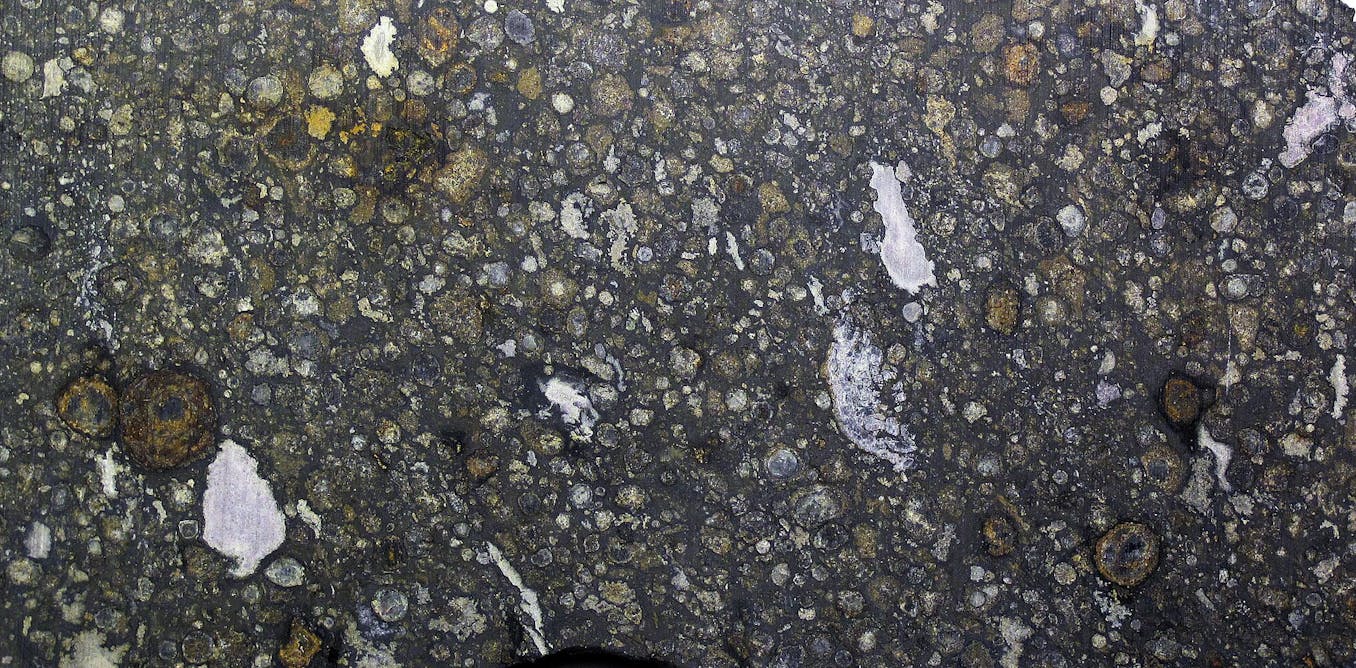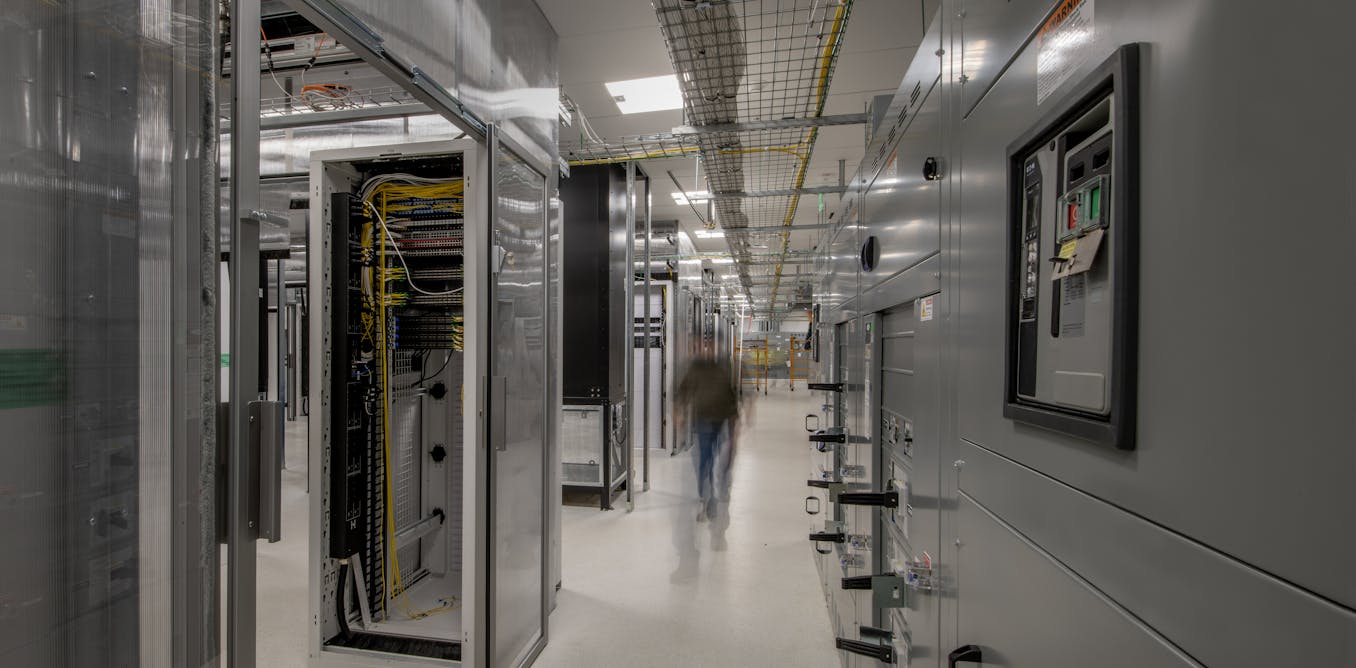Neurological conditions such as Alzheimer’s disease and addiction have long been regarded as challenging to treat with traditional medications. However, in recent times, Dr. Ali Rezai, a renowned neurosurgeon, has pioneered a groundbreaking approach to slow down the cognitive decline in patients diagnosed with Alzheimer’s disease and addiction using ultrasound.
In a recent episode of 60 Minutes, Dr. Rezai demonstrated how ultrasound can be utilized in brain surgery without any cutting. This innovative technique is aimed at opening the blood-brain barrier, a protective filtration system that prevents toxins from entering the brain. By targeting specific areas of the brain and using ultrasound technology, Dr. Rezai seeks to allow drugs to effectively penetrate the brain and target the root cause of neurological disorders such as Alzheimer’s and addiction.
Despite the risks involved, Dr. Rezai’s approach has shown promising results in his early patients. Using ultrasound to modulate the blood-brain barrier allows the therapeutic payload to precisely target areas affected by the disease. This pioneering approach has the potential to revolutionize the treatment of Alzheimer’s and other brain disorders, offering hope to patients and their families. Dr. Rezai’s groundbreaking research and innovative techniques pave the way for a new era in neurological treatment, offering a glimmer of hope for those struggling with debilitating conditions.
Watch the video by 60 Minutes
Anyone who’s had experience with Alzheimer’s disease knows the agony of watching someone fade away as it steals memory and at the end a person’s own identity tonight we’ll show you an experimental way to try and beat back Alzheimer’s it’s been tested on just a handful of patients but it caught our
Attention because of the doctor involved Dr Ali rosai who 60 Minutes first met 20 years ago Dr Rai is a neuroscience pioneer who’s developed treatments for Parkinson’s Disease and other brain disorders over the last year we followed this master of the Mind as he attempted to delay the progression of Alzheimer’s
Disease and its worst symptoms using ultrasound we saw a Cutting Edge approach to brain surgery with no cutting the story will continue in a moment if we can we should not be doing brain surgery you’re a brain surgeon I am but I should be out of a job because
Brain surgery it’s cutting the skin opening the skull it can be barbaric you’re going to go right in there it looked like a scene from a sci-fi movie make it a little bit more comfortable a Halo wrapped patient pushed into a tube we’re ready to go as a team of doctors
Manipulate his brain from the other side of the glass gain high modulate power 3 minutes okay we’re ready to go Dr oi Rai allowed us to witness his revolutionary attempt to use ultrasound to slow down the cognitive decline in three patients diagnosed with Alzheimer’s disease it’s never been done before there’s no
Mirical cures here it’s advancing medicine with calculated risks and pushing the Frontiers so we’re targeting these areas Dr Rai and his team are focused on these red patches in the patient’s brain scans the red indicates the densest beta amid protein that gummy protein is believed to play a major role
In Alzheimer’s by dis erupting communication between brain cells in people with Alzheimer’s it accumulates much faster and over time these protein aggregates we call them plaques like plaques into arteries they keep on accumulating and impacting function there are two FDA approved drugs on the market that can help break up that brain
Plaque at a canab was approved in 2021 followed by lamap last year both are given venly but they work slowly typically you go into the clinic and you get an IV and you have the antibody infusion over 1 to two hours and you have to do it uh once a month or
Twice a month for 18 months and longer and during those 12 to 18 months the brain is continuing to progress Alzheimer’s is not going away it takes so long because the drugs have a hard time getting through something called the bloodb brain barrier this tight filter of cell cells line the blood
Vessels to keep toxins from leaking into the brain but it also prevents almost all of the medication from getting into we think that that’s what’s causing the BB disruption by opening this year Dr Rai thought he could solve that problem with ultrasound the same technology that’s
Been used for 70 years to give doctors a view of organs and Fetal development just good you’re good come back he chose ultrasound because it easily penetrates the skull and can be focused like sunlight through a magnifying glass to help open the bloodb brain barrier and
Allow the drugs to rush in this way we’re getting the payload the therapeutic payload exactly to the area it needs to go with a high penetration but we got to be careful because we want to be safe about this you don’t want to deliver too much don’t want to open the
Blood brain barrier too much because if you open it too much what could happen get bleeding in the brain you can get swelling in the brain you can get many other problems so you have to get it just right we will show you exactly how that worked and the early results in a
Minute but to understand why one of the country’s most accomplished brain surgeons is betting on ultrasound okay open and close your hands for me you have to go back to 2002 when Dr Rai first caught our attention in a story morly safer reported on treating Parkinson’s disease look up show me your
Teeth stick a tongue out very good Dr Rai was among the first to implant a pacemaker type device in the brain which stopped uncontrollable movements suffered by Parkinson’s patients it’s like traveling through a labyrinth as in the Greek myth and around every quarter you have that bloodthirsty monster that
Can jump on you so you want to be careful to avoid these areas that kind of implant surgery is now routine for advanced Parkinson’s Dr Rai went on to write hundreds of scientific papers secur dozens of patents and present his Parkinson’s research to Congress and the
White House he could have gone to any big City Research Center but true to form he chose to try something different and move to Morgantown West Virginia where he is the executive director of the Rockefeller Neuroscience Institute it was a fantastic move because we’re able to achieve so many things that
Would have been difficult at other institutions sometimes in the bigger institutions you may not be hungry as much for you may have a thousand different agendas and priorities here we think we have a very Nimble and agile team that can quickly get outcomes like in 2019 this is video Dr rai’s team took
When they were among the first to use ultrasound to treat Tremors for 15 years Dan wall had been suffering from essential tremor a neurological disorder you okay you got a hat on now okay all right very good ri’s team focused ultrasound into a part of the brain
Called the thalamus to destroy a Pino size patch of tissue doctors believed was responsible for the tremors 180 elements converging right there wall was awake during the procedure touch my finger with your finger after 2 hours the 71 year-old’s Tremor was gone I’m feel afraid I’m going to drop
It you got it I’ve got it really good show yeah wow prise the Lord that success helped convinced Dr aai good morning that focused ultrasound could be adapted to patients with other brain disord MERS including Alzheimer’s disease my first symptoms that I noticed were that I was having trouble typing at
Work did you think you had Alzheimer’s no I didn’t Dan Miller is just 61 years old his wife Kathy began noticing changes four years ago he kind of hit it pretty well and then I noticed he was um having trouble his clothes would be backwards MH and those kinds of things
Just little things little things yes a scan of his brain revealed what Dan had been hiding Mr Miller had a very large amounts of beta amid the red spots indicated a buildup of those beta amalo proteins the so-called brain plaque a marker of Alzheimer’s Dr Rai explained
To Miller he couldn’t cure him of the disease but he hoped to slow its progression why take part in the trial if it’s not a cure I have to explain to you that I was at the point you know like in Dante’s Inferno where where it
Says abandon all hope you who enter here for me it was just you know let’s do this you know what do I have to lose and you are infusion sir here’s how it worked hours before the procedure Miller was given an IV treatment of attak canab
One of those two new drugs to reduce beta ameloid plaque Miller was then fitted with this million dooll helmet similar to the one the team used to treat Tremor patients it directs nearly a thousand beams of ultrasound energy at a Target the size of a pencil Point basically the patient
Lies on the MRI table and the head goes inside the helmet and the patient is immobilized with a Halo or with a mouthpiece because we don’t want movements to cause errors in our targeting in the brain is that comfortable THB up once inside the MRI
Machine gave Dr Rai a 3D view of the plaque would Target in Dan Miller’s brain The Next Step was an IV solution that contained microscopic bubbles when hit with ultrasound energy the bubbles pry open that bloodb brain barrier okay ready we can Sonic in now there we go the bubbles start vibrating they’re
Moving they’re moving they start expanding so you can open the barrier temporarily now it’s open for 24 to 48 hours and then it reseals so this gives you a tremendous opportunity for 24 to 48 hours with the barrier being open so now therapeutic can get inside the brain you can’t hear ultrasound that
Noise is a signal to tell rai’s team the ultrasound is doing its work very nice opening at the blood brain barrier each dot represents an area where all the waves all the ultrasound waves converge and open the blood brain barrier so this this is just one blast
If you will one blast getting there and you’re hitting one point one point and then it moves to the next one even though patients were awake they told us they didn’t feel a thing it all took a couple of hours and they went home when it was over the three patients
Were given the treatments of ultrasound with infusion once a month over 6 months that’s another Target right there the result beta ameloid plaque targeted with ultrasound were reduced 50% more more than areas treated by infusion alone that’s the top of the head right there Dr Rai shared the three patients brain
Scans with us and the red indicates more density of beta ameloid plaques in the brain so you can see as you treat it with ultr closely at the areas outlined in white that were targeted with ultrasound and the drug you get reduction whoa that’s after you can see the plaques are very significantly
Reduced by opening the blood rain barrier just in one area have your lay back Dan Miller and the third patient in the trial had larger areas of their brain targeted with ultrasound and this is his Baseline and then you can see here after 26 weeks there’s a very dramatic reduction in the
Beta ameloid in the areas as outlined by this white Mark and now we’re going to look at patient number three and this patient underwent antibody infusion therapy plus ultrasound you can see this area which is really amazing the ultrasound opened the blood brain barrier and the antibody went in faster
And cleaned out the plaques what was your reaction when you saw this scan uh I mean my jaw dropped I’m like whoa I was actually even in the clinic seeing patients and the Pet Scan technician called and said oh yeah there’s a big change I’m like how do you know we have
To analyze it he’s like no you can see it on the screen so what did you think when Dr Rai shared the the scans with you it was surreal you can really see it you don’t have to be a doctor and understand what’s going on there absolutely not even the red is
Decreasing that’s amazing Kathy Miller says she can see it in her husband too who slips up once in a while but hasn’t slipped further away he has trouble finding things I’ll send him into the kitchen to get something and he’s like it’s not there and I’m like yes it is I
Can see it but he can’t see it but if that’s the worst that’s nothing you’ll take it I’ll take it you feel hopeful about the future I do yes I learned that what I needed to do is accept that the Old Dan is gone and then start working on the
New me which has a future Dr rai’s team told us there’s been no change in the ability of the three patients to do their daily activities since the ultrasound treatments ended in July now that Dr Rai has shown Focus ultrasound can clear beta ameloid plaques faster he has FDA
Approval to use ultrasound to try and restore brain cell function lost to alzheimer’s what’s the result of breaking up all those plaques to the damage that’s already been done to the brain we don’t know if it’s going to reverse the damage to the brain because Alzheimer’s the underlying cause is
Still occurring so we have another study that we’re looking at with ultrasound first clear the plaques then deliver ultrasound in a different dose to see now if we can reverse it or boost the brain War for people with Alzheimer’s when we come back we’ll show you Dr rai’s new way to use ultrasound
To reset the brain and help people suffering from drug addiction the human brain contains a 100 billion neurons that’s as many cells as there are stars across the Milky Way Dr Ali Rai has spent 25 years exploring this Frontier of medicine the surgical techniques and therapies he pioneered
Are in use around the world Dr Rai allowed us to see his latest research over the last year at the Rockefeller Neuroscience Institute in Morgantown West Virginia it includes revolutionary treatments for a brain disease suffered by 24 million Americans addiction the results so far have been lifechanging
For the people we met once trapped by drugs the story will continue in a moment looking back I didn’t have a chance what do you mean you didn’t have a chance I couldn’t do anything without having that drug um in my system Jared Buckhalter is the son of a coal
Miner at 6’3 he was a high school football standout who dreamed of playing wide receiver at Penn State but after a shoulder injury he got hooked on painkillers the very first time that I that I took that first pill um I I knew that I wanted that feeling for the rest
Of my life what did it feel like it’s just pure Euphoria he took us to where he said he often went to buy drugs including heroin everybody in morgant town knows to to come here probably 17 18 years old you know just a kid Buck halter still looks like an athlete it’s
Hard to imagine he was an addict for more than 15 years he told us he does not remember how many times he overdosed and that he couldn’t stay clean for more than 4 days at a time I didn’t know where I was going to sleep some nights
You know my family didn’t want me around anymore um I just I did so many things to hurt them that you know it was just too much for them to deal with four years ago a psychologist who’ worked with buck halter introduced him to Dr Ali rosai who was gearing up to perform
A new kind of brain surgery to treat severe addiction our protocol was people that have failed everything once you’ve tried everything everything residential programs multiple failers detox multiple times outpatient inpatient multiple overdoses I think classified it as endstage drug user I mean end stage makes you think that this is the end of
Your life correct um and hearing that at the age of 34 um it was crazy let bring the DBS electrod in Dr Rai thought he might be able to adapt technology he helped develop years earlier to treat Parkinson’s disease to treat people with severe addiction we’ve been able to map
Out with Neuroscience Imaging there’s a spefic specific part of the brain that is electrically and chemically malfunctioning that is associated with addiction so it’s not just willpower it’s what’s happening in the brain it’s a brain disease it’s an electrical and chemical abnormality in the brain that occurs over time with recurrent use of
Drugs and this can be any substance as alcohol can be opioids amphetamines cocaine and they all are involving the same part of the brain and so your idea was what with the implant Parkinson’s we implant that in the movement part of the brain that is electrically malfunctioning causing shaking in this
Case we’re going into behavioral regulation anxiety and craving parts of the brain Dr Rai has seen the impact of addiction in his community the problem is so severe in Morgantown a vending machine dispenses the overdose antidote Narcan for free you got your baselin the National Institute on drug abuse agre to
Support Dr rai’s attempt to fight addiction with a brain implant in 2019 the FDA gave him a green light to attempt the groundbreaking surgery change the cover please that is Jared Buck halter he agreed to be the first addiction patient in the US to get the implant Dr rai’s team interviewed him
The day before the surgery the best outcome uh possible would be you know just to cut the Cravings out and and make me felt a little bit better if you know if those couple things happen you know uh that’s all I could possibly ask for at that time I was so desperate for
A better life um that I was willing to do just about anything and I signed up to do it I think some people might look at this and think an electronic implant in the brain sounds a little creepy people maybe 50 years ago they say a implant in the heart sounds creepy now
It’s like normal 255 years ago people are saying what are you doing you’re putting an implant in the brain for Parkinson’s but now it is routine part of standard of care for advanced Parkinson’s this is video from the 7-hour procedure I’m ready you are surgery so new it didn’t have a name yet
Dr Rai opened a nickel-sized hole in Buck Halter’s skull then he directed a thin wire with four electrodes deep inside Jared are you okay yes sir all right Jared was awake during the surgery why was that necessary to map the brain we have tiny microphones the size of a
Hair we put inside the brain and they’re going slowly with micro robots they go at increments of a thousand of a millimeter very slow we drive them into the brain and we’re listening to the neurons talking to each other in addiction we want to find the area in a
Reward center so that confirms where we are in the brain once we listen and say okay that’s the right sound then we put the final therapeutic pacemaker what does it sound like static electricity which may be electricity to you but is music to my ears music
Because Dr Rai says it’s a signal that he found the right spot in the brain for the implant once in place the wire was connected to a device placed below the collar bone okay the electrical pulses it sends to the brain are intended to suppress Cravings Buck halter said it
Was painless post surgery the system is adjusted remotely with a tablet computer is needed when they turned the unit on it was an immediate change what was the change just felt better you know just felt like I did prior to ever using drugs but a little bit better and it was
At that point that I knew that I was going to have a legitimate shot at doing well in all four patients with severe drug addiction had the implant surgery one had a minor relapse another dropped out of the trial completely but two have been drug-free since their operations
Including Jared Buck halter who’s been clean for 4 years if you hadn’t met Dr Rai if you hadn’t gone through this implant do you think you’d be sitting here talking to me today you may be talking to my parents you know those that have lost their their loved ones to
A drug overdose um um but you wouldn’t be talking to me there’s there’s no doubt about that ah beautiful beautiful the surgery was a success but opening someone’s skull is always risky Dr Rai thought he could reach more patients quickly if he used ultrasound he was already using it to treat other brain
Disorders and was convinced focused ultrasound could Target the same area of the brain as the implant is this brain surgery without a knife it is indeed so this is there’s no skin cutting there’s no opening the skull so it is brain surgery without cutting the skin indeed now this is just the
Measuring part right Dr Rai explained how his team would be the first to treat addicts by aiming hundreds of beams of ultrasound to a precise Point deep inside the brain so the area that we’re treating is the reward center in the brain which is the nucleus of comass which is
Right down at the base of to this dark area and then we deliver ultrasound waves to that specific part of the brain and we watch how acutely on the table your cravings and your anxiety changes in response to Ultrasound how is the ultrasound making a change here ultrasound energy is changing the
Electrical and chemical Millie or activity in this structure in the brain involving addiction and Cravings just re setting them and giving them kind of a fresh start at this point it seems like the brain is being reset or rebooting of the brain and the Cravings are less
They’re managed anxiety is better so now that allows them to interact with the therapist it’s very important to know that this is not a cure but an augmentation of the therapy by reducing the cravings and anxiety that’s so overwhelming that the therapist has difficulty working with the patient last
February we watched Dr isai used focused ultrasound to treat Dave Martin who told us he’s been surrounded by friends and family who use drugs his whole life when did you start using drugs um when I was 7 years old seven yes I did drugs for 37 years what kind of drugs were you
Using anything I can get my hands on inside the MRI Martin was shown these images of drug use to stoke his Cravings his legs were moving a lot and his very agitated a simultaneous brain scan allowed Dr Rai and his team to immediately spot the area in the nucleus
Accumbent that was most active I’d like to see the targets one more time 90 watts of ultrasound energy were beamed at a Target the size of a gumdrop ready Sonic all right there we go within minutes we noticed Martin’s foot that had been anxiously bouncing was still
And he told rai’s team that those same images of drugs he was shown earlier we’re now not sparking the need for a fix heroin is going down meth is also going down marijuana is down marijuana’s down a lot actually good keep on sonicating the day the procedure it was
The best day of my life I didn’t experience the same effect as like the times before you didn’t feel like I need that I no I didn’t feel like I needed the The Urge or the desire to use wasn’t there anymore So within 15 to 20 minutes of treatment they craving and anxiety
Melts away and we’re seeing this pattern in multiple instances then they can walk away after this there’s get off the table and go home and how long does this entire procedure 1 Hour 1 Hour 1 hour have you been around people still using drugs yes yes unfortunately I have um and what
Happens it didn’t even trigger me uh I used to use in ingeniously with with needles and it was a a little while ago not too far back but um this one individual was trying to hit theirself and they couldn’t hit and they asked me can can you hit me do you actually put
Drugs I actually stuck them drew the blood back you know now before when I drew their blood back it would like make make me sweat cuz I couldn’t wait to hit myself but this time it was just like God I hope they don’t OD and I kill them
Here you know but I didn’t have any urges or desire or anything so Dr rai’s team told us Dave Martin did admit to taking one painkilling pill at a party in December still 10 of the 15 patients in the ultrasound clinical trials have remained completely drug-free
Dr Oli Rai is trying the same ultrasound therapy on 45 more addiction patients and is already thinking about expanding the use of ultrasound to help people with other brain disorders I want to get a bass here including post-traumatic stress disorder and obesity let do it again this is serious business research
Never been done before we have to learn more we have to replicate our findings is there any risk at running towards something quickly there’s always risk but you cannot advance and make discoveries without risk but we need to push forward and take the risk because people with addiction and Alzheimer’s
Not going away it’s here so why wait 10 20 years do it now
About 60 Minutes
“60 Minutes,” the most successful television broadcast in history. Offering hard-hitting investigative reports, interviews, feature segments and profiles of people in the news, the broadcast began in 1968 and is still a hit, over 50 seasons later, regularly making Nielsen’s Top 10.
Video “Neurosurgeon pioneers Alzheimer's, addiction treatments using ultrasound | 60 Minutes” was uploaded on 01/15/2024 to Youtube Channel 60 Minutes


































